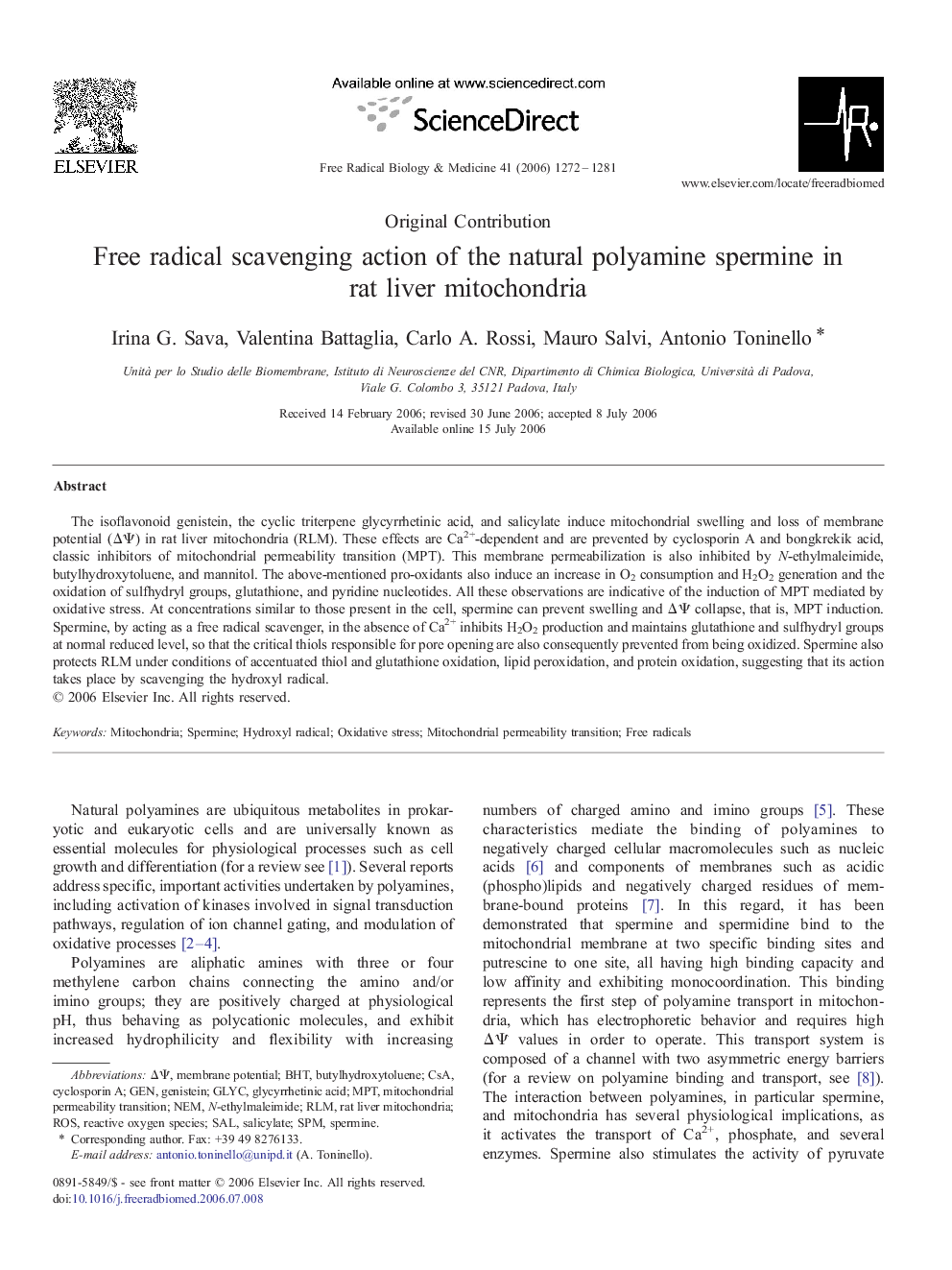| کد مقاله | کد نشریه | سال انتشار | مقاله انگلیسی | نسخه تمام متن |
|---|---|---|---|---|
| 1911391 | 1046815 | 2006 | 10 صفحه PDF | دانلود رایگان |

The isoflavonoid genistein, the cyclic triterpene glycyrrhetinic acid, and salicylate induce mitochondrial swelling and loss of membrane potential (ΔΨ) in rat liver mitochondria (RLM). These effects are Ca2+-dependent and are prevented by cyclosporin A and bongkrekik acid, classic inhibitors of mitochondrial permeability transition (MPT). This membrane permeabilization is also inhibited by N-ethylmaleimide, butylhydroxytoluene, and mannitol. The above-mentioned pro-oxidants also induce an increase in O2 consumption and H2O2 generation and the oxidation of sulfhydryl groups, glutathione, and pyridine nucleotides. All these observations are indicative of the induction of MPT mediated by oxidative stress. At concentrations similar to those present in the cell, spermine can prevent swelling and ΔΨ collapse, that is, MPT induction. Spermine, by acting as a free radical scavenger, in the absence of Ca2+ inhibits H2O2 production and maintains glutathione and sulfhydryl groups at normal reduced level, so that the critical thiols responsible for pore opening are also consequently prevented from being oxidized. Spermine also protects RLM under conditions of accentuated thiol and glutathione oxidation, lipid peroxidation, and protein oxidation, suggesting that its action takes place by scavenging the hydroxyl radical.
Journal: Free Radical Biology and Medicine - Volume 41, Issue 8, 15 October 2006, Pages 1272–1281